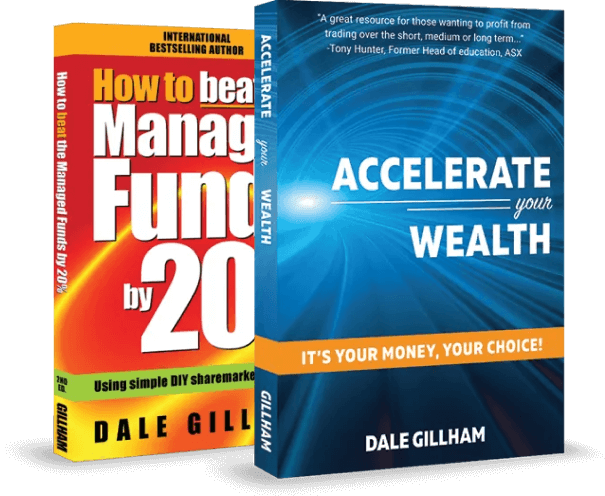Will the Stock Market Fall Below 7,000 Points?

By Dale Gillham
Unless you have been living in a bubble, you would be aware that the Australian stock market has been falling over the past five weeks. In the last seven trading days, it had fallen around six per cent before recovering slightly, which has caused many investors to become fearful and act emotionally by selling stocks in the hope of trying to avoid further losses.
Why human emotions drive our financial decisions
To understand why people do this, we need to look at behavioural finance, which explains why human emotions and cognitive biases influence our financial decision-making. One of the most powerful emotions driving our financial behaviour is fear, which causes investors to panic and make irrational decisions like we are experiencing now. But acting irrationally in the stock market can negatively impact your returns.
In a bull market, investors tend to display behaviours such as a herd mentality and FOMO but when the market is bearish, they have a fight or flight response due to loss aversion. While most investors know that reacting to their emotions is not the best strategy, unfortunately, most don’t know how to change their behaviour. That’s because overcoming fear is not easy, as it’s hard wired into us and for good reason.
That said, overcoming fear is essential if you want to be make rational decisions based on sound investment principles. There is a saying that ‘knowledge is the enemy of fear’ because if you know what to expect and how you will react prior to a situation occurring, you can make better decisions.
If investors knew that today would be the end of the fall and that over the next three months the market would rise 30 per cent, I dare say that many, if not all, would not exit the market. Instead, they would take the opportunity to buy more shares.
While I’m not suggesting the market will do that, I need to emphasise that investors shouldn’t be swayed by short-term market fluctuations, which is what I believe is occurring right now. Remember, the market fell over 10 per cent between August and October last year and over 6 per cent between December and January of this year.
As I often say, if you want to be successful in the stock market, it’s important to gain the right knowledge, have a workable trading plan and trust the plan. This will help you to move through volatile times with confidence and, in the end, achieve better returns.
What were the best and worst performing sectors last week?
The best performing sectors included Healthcare up 0.08 per cent followed by Communication Services down 0.55 per cent and Consumer Staples down 0.66 per cent. The worst performing sectors included Energy down 5.07 per cent followed by Information Technology down 3.23 per cent and Materials down 2.58 per cent.
The best performing stocks in the ASX top 100 included REA Group up 5.23 per cent followed by Stockland up 4.27 per cent and Downer EDI up 3.99 per cent. The worst performing stocks included Computershare down 13.22 per cent followed by Challenger down 8.37 per cent and Virgin Money down 7.93 per cent.
What's next for the Australian stock market?
Regular readers know that I always say you need to wait for confirmation of a move rather than act on speculation and the All Ordinaries Index has certainly proven this statement to be correct in the past couple of weeks. Currently the market is down 3.62 per cent for the month and over 7 per cent since the last high in early February.
Last week, the All Ordinaries Index fell to a low of 7,100 points which is slightly below the lower end of my target zone for the low, which was between 7,200 and 7,500 points.
Obviously, there are two scenarios that can occur from here. The first is that the market stops falling and starts to rise again. For this to occur, I would expect it to start rising any day now and a strong close on Friday will strengthen my thinking around this.
The other scenario is that the fall will continue and while it’s not the most preferable scenario, we do need to consider it. If the market does continue down, we need to expect the low will occur sometime in May and fall below 7,000 points and possibly as low as 6,000 points.
One thing to be mindful of is that we can’t control the market, we can only control what we do and how we react. We also need to understand that no one is 100 per cent accurate in their analysis as to how the market will unfold, and as such, you need to put rules in place that allow you to manage both scenarios.
For now good luck and good trading.
Dale Gillham is Chief Analyst at Wealth Within and international bestselling author of How to Beat the Managed Funds by 20%. He is also author of the bestselling and award winning book Accelerate Your Wealth—It’s Your Money, Your Choice, which is available in all good book stores and online.






